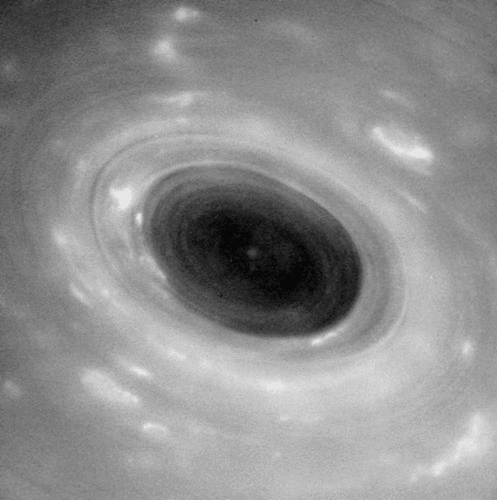Our annual fund-raiser ends May 5. EarthSky needs your help to keep going! Please donate!
Want to donate via PayPal or send a check to EarthSky? Click here.
On April 27, 2017, NASA announced that the Cassini spacecraft was back in contact with Earth after its successful first-ever dive between the planet Saturn and its rings the day before. The spacecraft is now in the process of beaming back science and engineering data collected during its historic dive.
As it dove through the gap, Cassini came within about 1,900 miles (3,000 km) of Saturn’s cloud tops and within about 200 miles (300 km) of the innermost visible edge of the rings.
Cassini has begun began what mission planners call its Grand Finale during which the spacecraft loops Saturn approximately once per week, making a total of 22 dives between the rings and the planet. Cassini’s next dive through the gap is scheduled for Tuesday (May 2, 2107).
The spacecraft, which is almost out of fuel, is on a trajectory that will eventually plunge it into Saturn’s atmosphere – ending its mission – on September 15, 2017.

According to a NASA statement:
The gap between the rings and the top of Saturn’s atmosphere – a region that has never been explored – is about 1,500 miles (2,000 km) wide. The best models for the region suggested that if there were ring particles in the area where Cassini crossed the ring plane, they would be tiny, on the scale of smoke particles. The spacecraft zipped through this region at speeds of about 77,000 mph (124,000 kph) relative to the planet, so small particles hitting a sensitive area could potentially have disabled the spacecraft.
As a protective measure, the spacecraft used its large, dish-shaped high-gain antenna (13 feet or 4 meters across) as a shield, orienting it in the direction of oncoming ring particles. This meant that the spacecraft was out of contact with Earth during the ring-plane crossing, which took place at 2 a.m. PDT (5 a.m. EDT) on April 26. Cassini was programmed to collect science data while close to the planet and turn toward Earth to make contact about 20 hours after the crossing.
Cassini Project Manager Earl Maize of NASA’s Jet Propulsion Laboratory in Pasadena, California, said in a statement:
I am delighted to report that Cassini shot through the gap just as we planned and has come out the other side in excellent shape.
Our annual fund-raiser ends May 5. EarthSky needs your help to keep going! Please donate!
Want to donate via PayPal or send a check to EarthSky? Click here.

Bottom line: As part of its Grand Finale, NASA’s Cassini spacecraft made the first-ever dive through the narrow gap between the planet Saturn and its rings on April 26, 2017. It will make a total of 22 such dives before ending its mission by plunging into Saturn itself in September, 2017.











